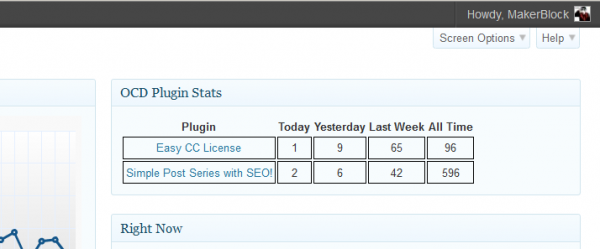The idea for this little plugin has been rattling around in my head for a little while now. It clocks in at less than 60 lines of code, including comments, and makes it easy to create a “series” for posts.
As I’ve been blogging about my (mis)adventures in building a DrawBot, I’ve been updating each post to contain a link back to all of the prior posts in the series. However, if someone were to find one of the first posts – they wouldn’t see a link to a later post. That is, unless I update all the posts. That’s not really much of an option, since I’ve racked up 23 posts in less than 19 days.
This plugin is actually super simple. Here’s what it does:
- Add a “post meta” tag for the current post with the same key as whatever you want to name the post series
- Query the database for all posts with the same post meta key as the one for the current post
- Output an ordered chronological list of all posts in with the same post meta key as the one for the current post
The simplicity of this plugin are actually some of it’s strongest features. Unlike a lot of other series plugins out there, it doesn’t create any unnecessary tables in your WordPress database. There are no settings to mess with, no CSS to fiddle with, no ugly standard formatting to overcome.
The only downside I can perceive is that if you delete the shortcode from a plugin, it will still leave the post-meta attached to the post and the post will still appear in the series. If you leave the shortcode in and don’t specify a series title, it will delete the post-meta. I suppose I could include a little button in the interface to delete the post from the series, but really, it’s just not going to be used that often.
Anyhow, this is something that I’ve wanted to have for a long time – I just hadn’t gotten around to building it yet.
Default Series Title

